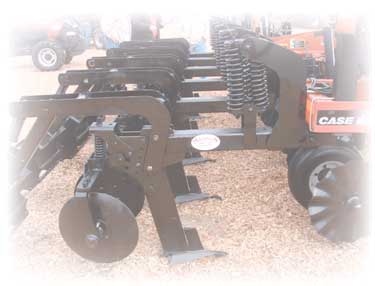Suitable Conditions for Subsoiling
Soils should be mostly dry and friable. If the soil is too wet, subsoiler shanks will slide through the ground without breaking up the soil. The shank can actually glaze the soil and compact it even more. If the soil is extremely dry, getting the subsoiler into the ground can be difficult, requiring larger, more powerful tractors to pull the shanks through compacted areas. Soils, especially those with more clay content, can actually break into large clods or slabs if conditions are too dry.
For most areas, ideal subsoiling conditions are during summer months before the soils are completely dry. Soils should crumble without sticking together, yet not be so dry and hard that they can't be broken up easily. The timing of ideal conditions will vary depending on the local climate. Contractors may prefer subsoiling wet ground because doing so is easier on their equipment and requires less fuel.


